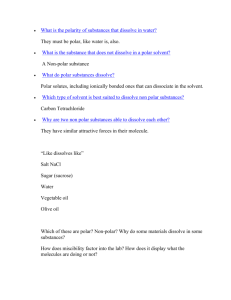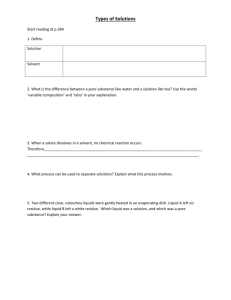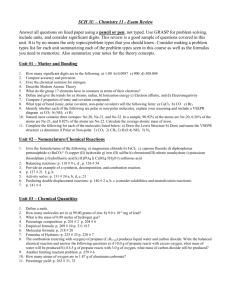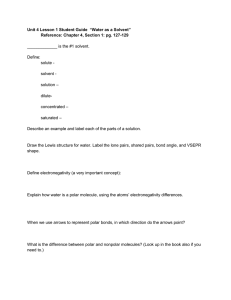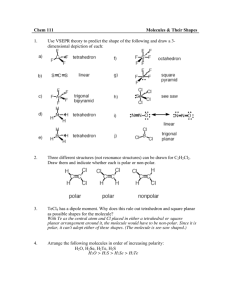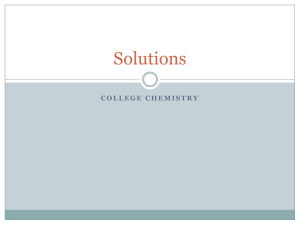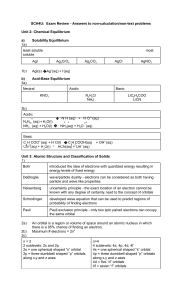Intro to Solution Chemistry Worksheet #2 Name: Explain the phrase
advertisement
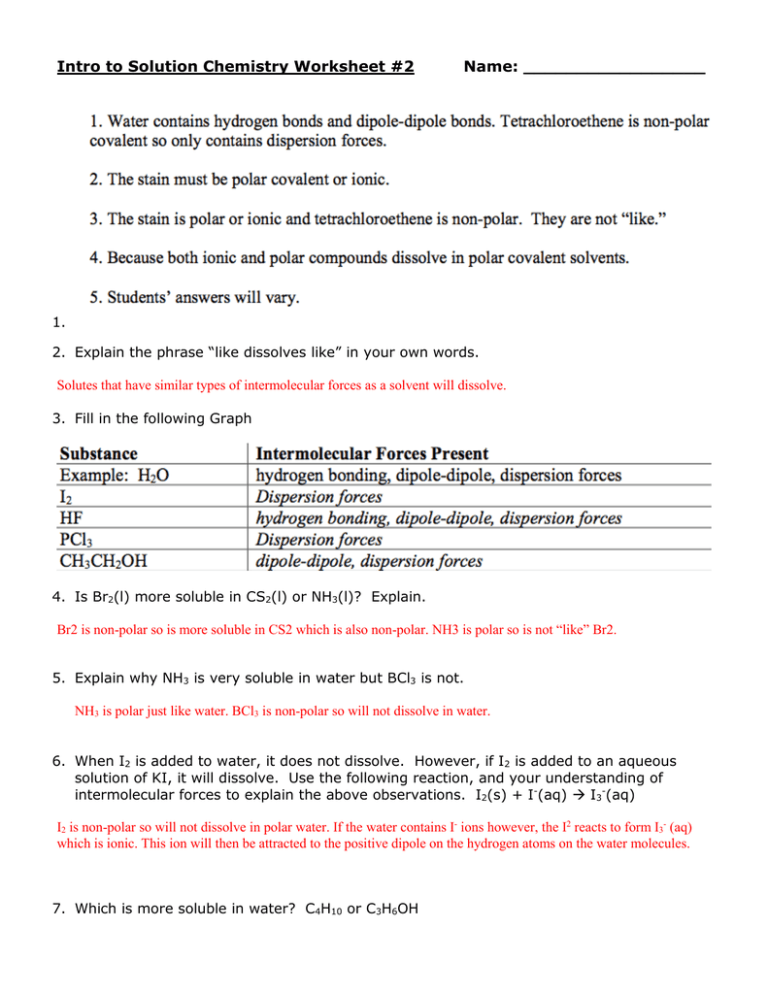
Intro to Solution Chemistry Worksheet #2 Name: _________________ 1. 2. Explain the phrase “like dissolves like” in your own words. Solutes that have similar types of intermolecular forces as a solvent will dissolve. 3. Fill in the following Graph 4. Is Br2(l) more soluble in CS2(l) or NH3(l)? Explain. Br2 is non-polar so is more soluble in CS2 which is also non-polar. NH3 is polar so is not “like” Br2. 5. Explain why NH3 is very soluble in water but BCl3 is not. NH3 is polar just like water. BCl3 is non-polar so will not dissolve in water. 6. When I2 is added to water, it does not dissolve. However, if I2 is added to an aqueous solution of KI, it will dissolve. Use the following reaction, and your understanding of intermolecular forces to explain the above observations. I2(s) + I-(aq) I3-(aq) I2 is non-polar so will not dissolve in polar water. If the water contains I- ions however, the I2 reacts to form I3- (aq) which is ionic. This ion will then be attracted to the positive dipole on the hydrogen atoms on the water molecules. 7. Which is more soluble in water? C4H10 or C3H6OH C3H6OH – it contains a polar end that is attracted to the polar water molecules 8. Ethylene glycol is commonly used as antifreeze. In which solvent would antifreeze be most soluble? a. Water or paint thinner (a non-polar covalent solvent) Water – both polar b. ammonia or carbon tetrachloride Ammonina – both polar c. hexane (C6H12) or glycerin (a polar covalent solvent) Glycerin - both polar
